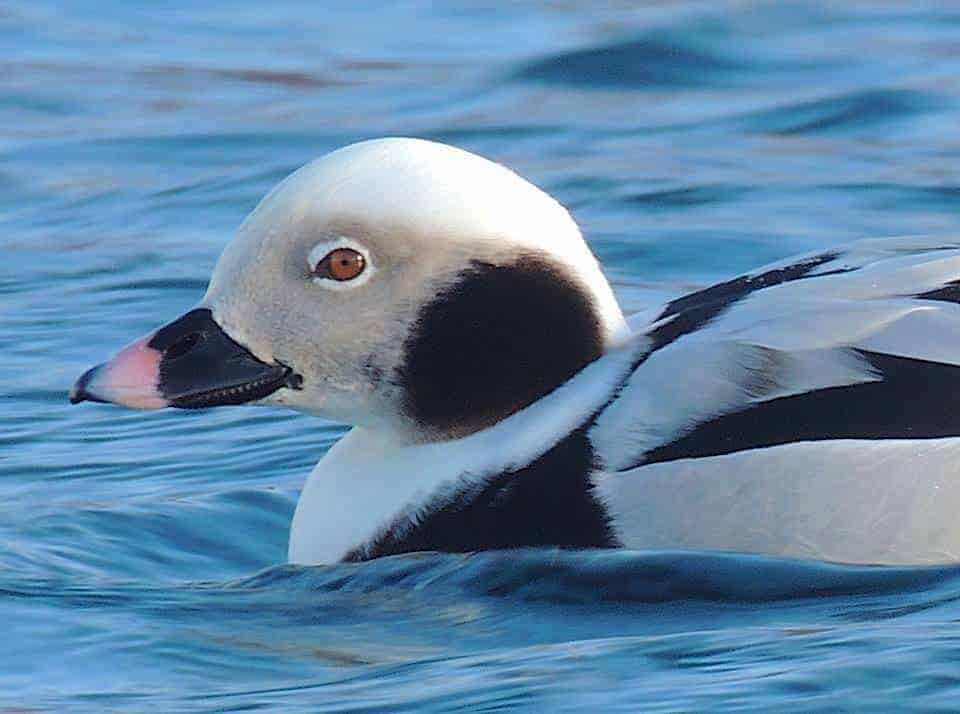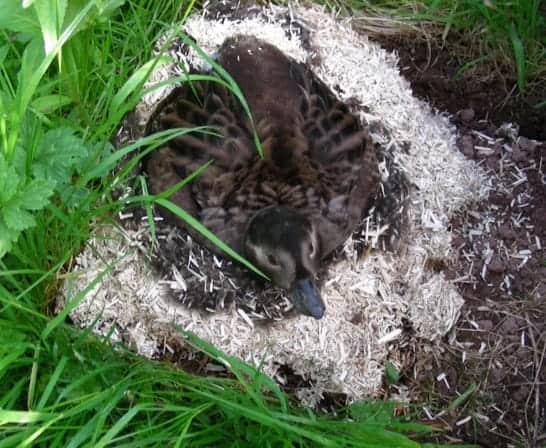Long-tailed Duck

Keeping the Long-tailed Duck is a challenge. Clean cool water is a must and they like to be in the company of their own kind. They prefer to nest near others, making a shallow scrape in the ground and lining it with available vegetation and some down. 6–9 pale grey/olive eggs are incubated for 24–29 days. The young leave the nest soon after they are dry and can feed themselves immediately.

Clangula hyemalis
One of the most charismatic of our sea ducks, the Long-tailed Duck‘s call is captivating. Melodious yodelling and yelps hardly do it justice. They are slightly unusual in their plumage, having three distinct suits each year (most ducks moult twice per year). In a complex series of overlapping partial moults, changes in plumage happen continuously from April to October. The more mellow tones of the male’s winter plumage are thought to reduce aggression within the large flocks they have evolved to live in then. These flocks of several tens of thousands are at risk of becoming a thing of the past.
The range of the Long-tailed Duck is circumpolar. It breeds on the Arctic coasts of North America (Alaska, Canada and Greenland), Europe (Scandinavia) and Asia (Russia). In winter it may be found south as far as Oregon, the Great Lakes and North Carolina in USA, SW Greenland, Iceland, Britain, the Baltic and North Seas, and in the Pacific from Kamchatka south to Korea.
A long-lived bird in the wild, it spends most of its life at sea. Often congregating in huge rafts. It is believed to be the species which spends the greatest proportion of its time diving in relation to time on the surface. It forages for aquatic invertebrates, including insects and crustaceans, also some bivalves, fish, their eggs, and plant matter. Depth records extend down to 60 metres.
Globally, this species was uplisted from Least Concern to Vulnerable in 2012, where it has remained since, because of an apparent severe decline (~65%) detected in the wintering population in the Baltic Sea between the early 1990s and late 2000s. This rate of decline implies that the global population will undergo a ≥30% decline over three generations (1993–2020), even when factoring-in uncertainty regarding the sizes and trends of other populations. As a consequence of being classified as Globally Threatened, it moved directly from the Green list to the Red list in Britain in 2015. The key threats to the species are bycatch mortality in gillnets; oil pollution; disease; hunting; and climate change.

The traditional American English name of ‘Oldsquaw’ was considered possibly offensive to the native peoples, usage of the word having changed over time to have alternative connotations. The hoo-ha raged around the turn of the century. Political correctness gone mad? Possibly not: ‘We refuse to change on the basis of being politically correct; we will change in the name of uniformity,’ said Banks, an ornithologist with the U.S. Geological Survey at the Smithsonian. So Long-tailed Duck it is.
Share this page